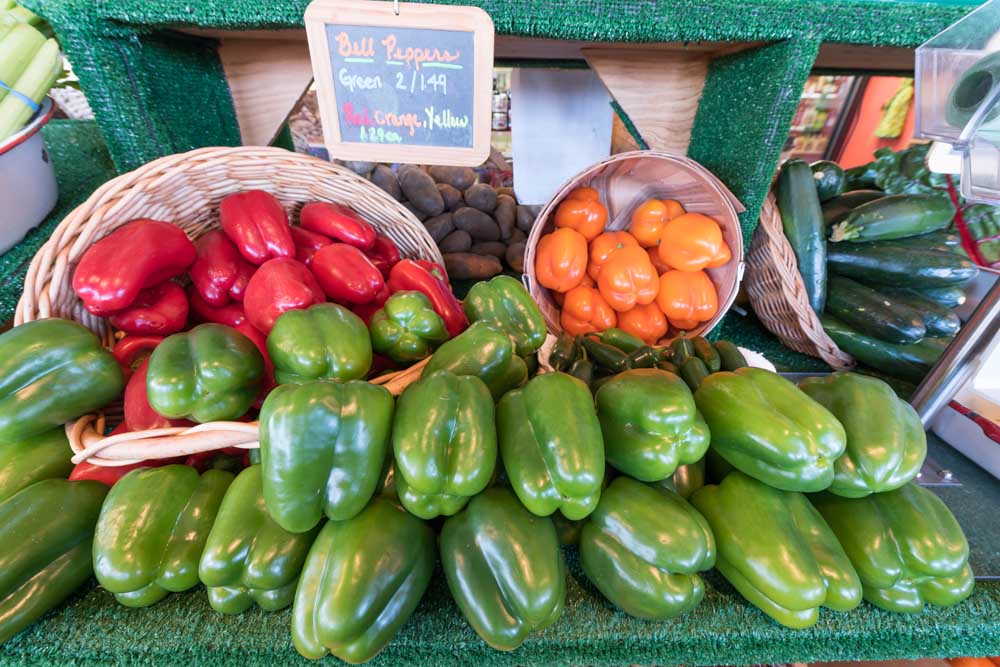Loving Local
Published 12:00 am Saturday, March 5, 2016

- Loving Local
Ever see a sign at a chain grocery store boasting of “fresh produce”?
Well, consider a piece of food in the United States travels on average 1,500 miles from farm to table. Kind of makes you look at that sign a different way, doesn’t it?
The quest for genuinely fresh, naturally ripened food is one piece of the “buy local” movement. This philosophy emphasizes buying food – fruits, vegetables, meat and dairy products – that comes from local farmers and ranchers. Locally sourced food not only benefits the consumer, but it also is a boon to the small-scale business owners who produce the food and to the community in which both buyer and seller live.
Jeromy Cockrell is co-owner of Schoolhouse Produce of Redmond. To him, one of the biggest benefits of shopping locally is ensuring the money circulates locally.
“It’s supporting the community you want to see, and returning those dollars to the community as opposed to sending them out of town,” he said.
According to a study conducted on behalf of Local Works in Grand Rapids, Michigan, when consumers spend money at locally owned businesses, the amount of their expenditure that remains in the local economy is 58 percent greater than when they shop at non-local businesses.
That means the money someone spends for locally produced food or jewelry or personal products recirculates within the same community, supporting other businesses and other residents.
“It benefits the community as much as it benefits the stores,” said Bryan Tremayne, owner of Primal Cuts Meat Market in Bend, referring to consumers spending money at locally owned establishments.
Katrina Van Dis, a board member with the High Desert Food and Farm Alliance, said buying locally provides a sense of pride and bolsters a sense of community.
“I feel good about buying local food,” she said. “I feel a connection to where I live.”
She said local farmers are doing a “public good” by working the land and providing fresh food. “Buy local” shoppers reward those efforts to farm and oversee the land, a line of work fraught with economic uncertainty.
“It allows them to continue to do the good work they do,” Van Dis said.
There are environmental benefits to buying locally, as well. Tremayne, the owner of Primal Cuts, notes that high quality, organic food products are available from virtually any country.
“But shipping it overseas? Is that what we should be doing?” he asked rhetorically.
“I don’t think so,” he said, referring to the environmental footprint involved in shipping goods around the world.
Buying local allows consumers to eat food that is picked at its peak ripeness. Produce sourced far from the local area is picked well before it ripens.
“It’s good for our body” to buy local, Van Dis said.
And shoppers can have more confidence in the quality of the products when they come from nearby. The smaller operations involved in local farms and ranches translate to more scrutiny of the quality of the food compared with industrial-scale food processing.
The origin of a product is important to customers at Natural Edge Furniture in Bend, which sells natural-edge furniture crafted from salvaged, reclaimed and recycled hardwood.
Experts at Natural Edge can look at the wood or the tree that is going to become a piece of furniture before they begin working on it and can apply more quality control than a large-scale manufacturer.
“Our customers really appreciate it when we can say the wood came from … a tree on Fourth Street that had to be taken down,” said Pat Brown, head of marketing and sales at the store in Bend. “For our customers, that story is important.”
Finding locally sourced products – whether it’s furniture, health and beauty aids or food – isn’t always easy. The first step is realizing that local products are available.
When it comes to food, farmers markets are often cited as a premier source of local food. Stores such as Whole Foods and Natural Grocers also offer organic and local food, as do Primal Cuts Meat Market and Schoolhouse Produce. Locavore has a permanent indoor farmers market.
For those who primarily shop for food at larger establishments, it’s important to realize that the non-national chain stores — Erickson’s Thriftway and Ray’s Food Place, for example — generally have more control over the source of their non-packaged food than chain outlets. Van Dis said a general rule is that the bigger the size of the store, the more nonlocal the food.
Cockrell, of Schoolhouse Produce, used to work in the produce section at a Fred Meyer. He said even the national chains have some local food in certain seasons. The Safeway on SW Century Drive, for example, has a section of local fruits and vegetables – perhaps 12 linear feet – tucked in the corner of the produce section.
“It’s much harder to shop local,” said Primal Cut’s Tremayne, alluding to the relative inconvenience and expense of getting local food.
But the benefits are undeniable.
“Keeping it local just feels good,” said Natural Edge’s Brown.








